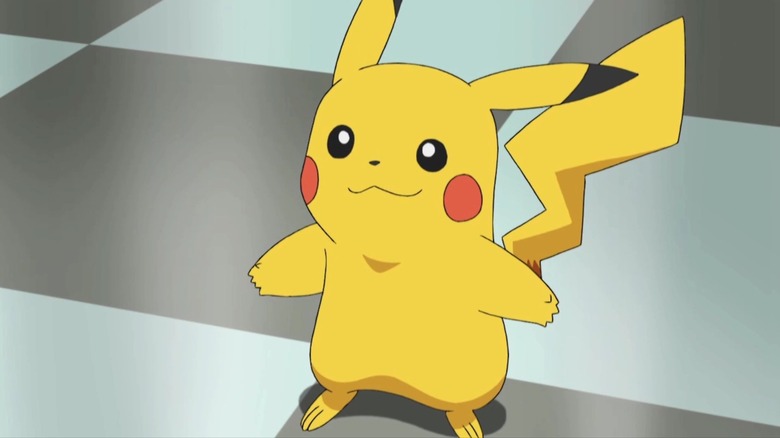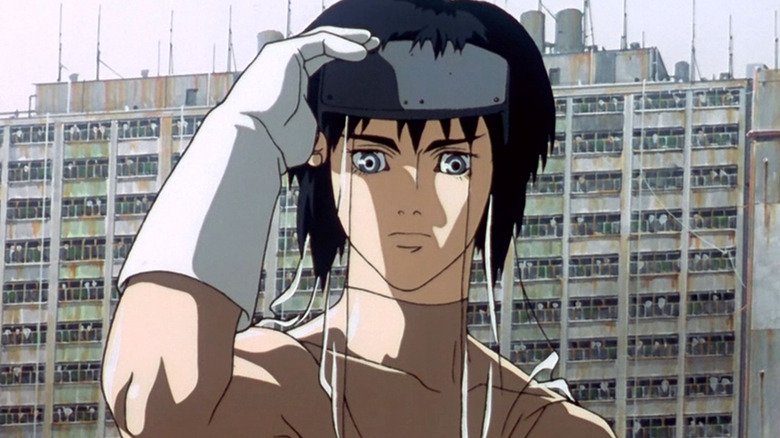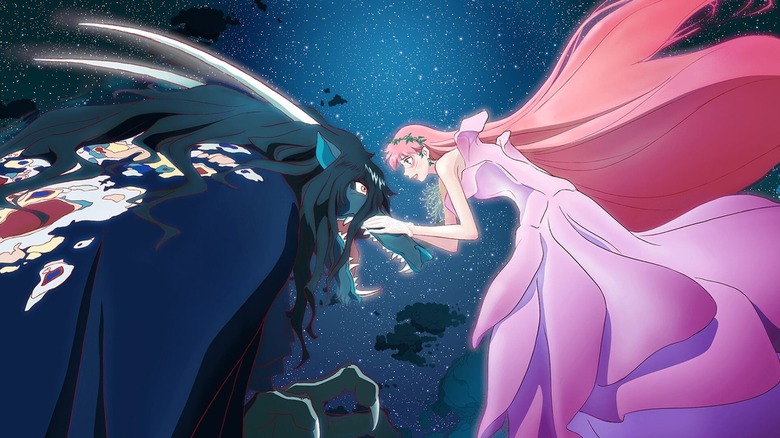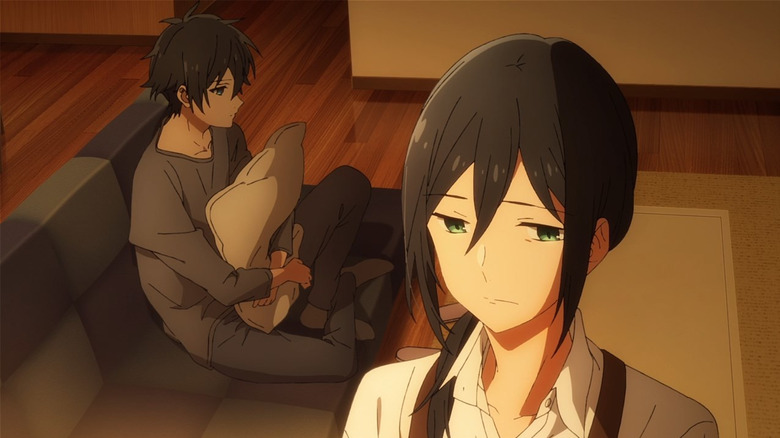The Pay Controversy That Plagues The Japanese Anime Industry
Fans of animation likely already know the process: An animation script is written, and the script is visualized on a storyboard of key scenes. The voice actors record the spoken parts, and their vocal track is laid over a rudimentary version of the storyboard into a rough draft of the finished film called an animatic. The key poses for each character are animated and cleaned by one team — the key art animators — and then the in-between moments are filled in by a different team called, fittingly enough, in-betweeners. Then the pencil drawings are transferred to clear animation cells, inked, painted, and photographed. This description is grossly oversimplified, of course, and doesn't take into account myriad other disciplines in the animation world; the art form is vast and complex and requires hundreds of people to pull off. For the moment, though, let's only look at the artists who work on the key art, and the in-betweeners.
In Japanese anime, the key art artists are called "genga men" and the in-betweening artists are called "douga men." The average pay for the average genga man was, in 2019, about $36,000 per annum, and the average salary for a douga man, a much more grueling job, was about $12,000. Break that out to a 40-hour work week, and that's about $17.31 per hour and $5.76 per hour respectively (this is according to the Japan Animation Creators Association). The real kicker: Japanese animators work far, far more than a mere 40-hour work week. Indeed, many animators work every possible waking hour, seven days a week, and have little time for anything in their lives beyond their jobs. Some work constantly and just barely make ends meet, and wages are not increasing, nor are they poised to.
This, despite an enormous anime boom in the last few years. While worldwide consumption of anime has increased in the last two years alone, anime salaries have stagnated.
Increased demand
In December of 2021, AT&T's anime streaming service Crunchyroll was purchased by Funimation — itself a subsidiary of Sony — for a whopping $1.2 billion. Netflix reported that, during the pandemic, consumption of anime increased by 50%, and China has been hiring Japanese anime firms to produce more and more films for the Chinese market. This sudden increase in demand has forced Japanese animation studios to work overtime, working at a breakneck pace and keeping their production schedules filled up years in advance. While one would assume this has also meant a subsequent boom in the salaries and living conditions for the industry's animators, that assumption would be incorrect. Because the Japanese animation industry is still working by an old-world model of production, the gaps between an anime's profit and the pay of the animators is only growing wider.
The anime industry, you see, has traditionally been overseen by teams of financing executives on bodies called "production committees." These production committees are the money-holders who finance a wide range of entertainment products — from anime to toys to manga. The production committees hire creative studios to work for a set fee, and the studios have to make a project with the budget set for them by the committee. If the anime the committee funded tanks, the studio is protected, and the committees absorbs the cost without any risk to the studio. However, if the anime is successful, the production committees pocket 100% of the royalties, and the studios — and the animators — get nothing.
This model may work for a modest, smaller studio that doesn't ever expect hits, but the worldwide explosion of anime's popularity has made production committees rich, and left nothing for the actual workers.
The vicious circle
Production committees have stubbornly kept budgets for anime productions very low, even as worldwide profits increase. And while there have been complaints to Japanese labor institutions from animators, there doesn't yet seem to be any shift away from the old model. Animators and studios want to put out good work and are willing to work hard — indeed, one might even be familiar with the Japanese culture of pride in being overworked. The term 過労死, or karoshi, translates to "overworked death," and it's a persistent phenomenon that is contributing to the exploitation of anime workers by production committees — as well as workers across all disciplines. One can see the American counterpart to this attitude in the last decade of Millennial "hustle culture," which forced young people just leaving college to work 12-hour workdays for a pittance — or in some cases, work as an intern for free — in order to "prove themselves" in their chosen industry. Meanwhile, they had to work as an Uber driver to make ends meet.
But because this model has been in place for so long, there is little desire to alter it. Indeed, in order to meet demand for increased output, studios have been relying more and more on cutting wages for existing workers, or hiring younger, hungrier artists who are willing to work for less. Animation is a particularly labor-intensive industry, and there are stories of animators working several days at a time, napping under their desks and skipping meals.
Cool Japan
Surely this is a violation of Japanese labor laws — and it is — but Japan is reluctant to regulate the anime industry in any sort of meaningful way, thanks to the "soft power" provided by the government-acknowledged-and-encouraged "Cool Japan" program. "Cool Japan" refers to a deliberate attempt by the Japanese government to exert an abstract form of cultural hegemony over the world via cultural and artistic exports. Some in Japan feel that "Cool Japan" — first enacted in 1980 — is now kind of irrelevant program, given that the worldwide exchange of media is easier and more ubiquitous as it has ever been. Nevertheless, the Japanese government has done nothing to enforce labor laws, saying that they can only enact change if there are enough complaints. There haven't been enough complaints.
There have been a few exceptions to the stagnation, luckily. The anime studio Kyoto Animation pays their employees as contract workers and not as freelancers (Kyoto Animation, it must be noted, was also the target of an arson attack in 2019 which killed 36 people and injured 34 more. The suspect accused the studio of plagiarism). Netflix is also currently funding an animation training program at WIT Studios, issuing a $8,400, six-month scholarship for new hires.
But what's more likely to happen is a labor crisis in anime. The model will only be sustained as long as there are workers who are willing to exhaust themselves for very little pay, and that — as we have learned with hustle culture — is not a very sustainable model. Eventually a generation of workers will "kill" the industry by dropping out and seeking better-paying employment elsewhere. Either pay will have to increase, production committees will need to be abandoned, or the current glut of anime will eventually contract. The current pay structure cannot hold.



